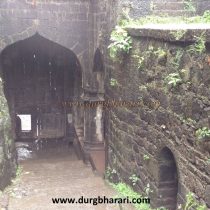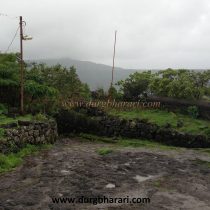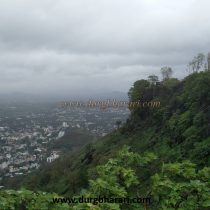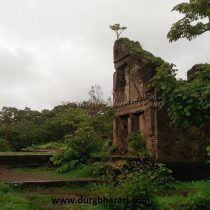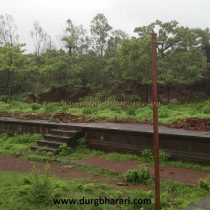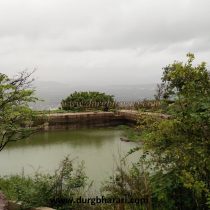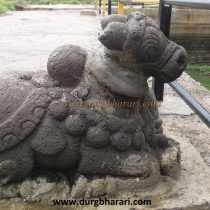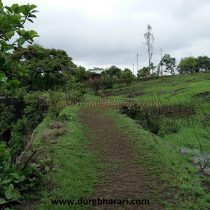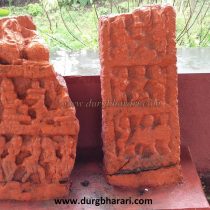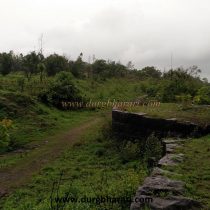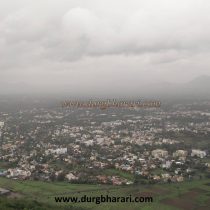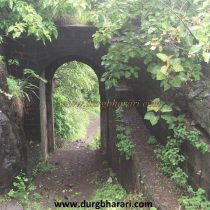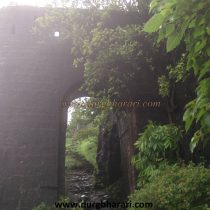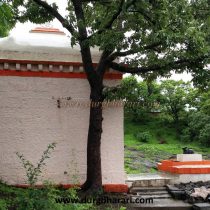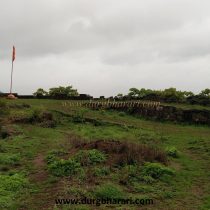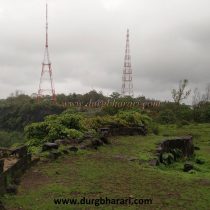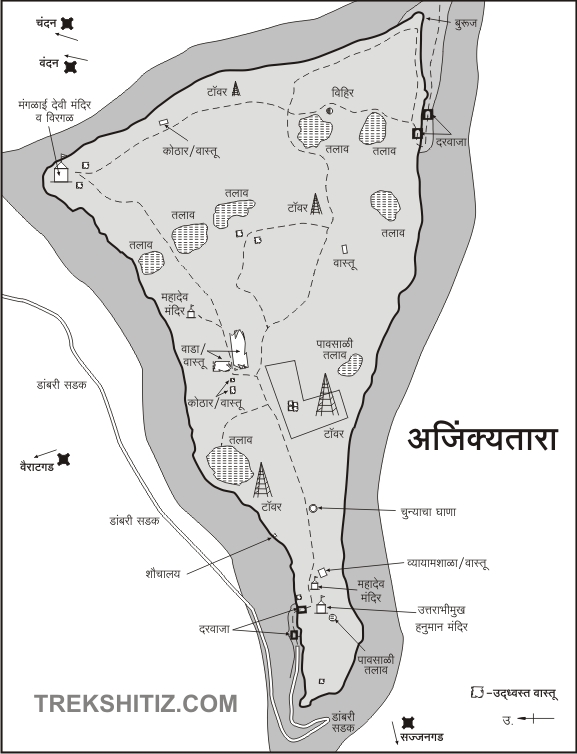AJINKYATARA
TYPE : HILL FORT
DISTRICT : SATARA
HEIGHT : 3290 FEET
GRADE : EASY
Ajinkyatara aka Satara Fort, situated on the backdrop of Satara city, is the backbone of Satara city. As the fort is the fourth capital of the Swarajya, close to the city of Satara, there are many options to visit the fort. There is a paved road from the city court to the fort and you can reach the main gate of the fort directly by private vehicle. Apart from this, some other steps from the village come to this door. One and a half hours is enough to walk from the base to the fort. The main gate of the fort is built in two bastions and considering its overall construction, it must have been built after Shivaji Maharaj’s era. The wooden doors of this west-facing door are still standing and the arch of the door is decorated with sculptures and carvings.
...
Images like Sharabh with elephants under their feet, Kirtimukh, Garuda, Hanuman, Ganapati are carved on this arch.Upon entering through the small door of this gate, there are guard cabins on both sides and human sculptures are carved on this cabin. The road leading from here is completely blocked by ramparts and after climbing 20-25 steps we reach the second north-facing gate of the fort. The construction of this gate makes one realize that it is a gate in the original construction of the fort. After entering through this door, you enter the fort by climbing 10-12 steps. The triangular fort, which is 3290 feet above sea level, is spread over 65 acres from east to west. In this part of the door, Maruti Mandir, Mahadev Mandir can be seen on the right, and limestone can be seen at some distance. Most of the fort's buildings are in the middle of the fort and this area there are broadcasting towers of radio, Television, and Police departments. There is a paved path to reach this tower. After going straight on this path, the path on the left takes you to Mangaladevi temple. Upon entering through the fallen arch on the way, one can see the square of the palace built of stone. Although the roof of this chiseled structure has collapsed, its grandeur can be seen from its remaining remains. Ranaragini Tararani once lived in this palace. There is a temple of Lord Mahadev near this palace. Looking at the remains of houses in this area, the main settlement on the fort should be in this area. Two hidden storage can be seen in this architectural relic. The straight path from here takes you to the temple of Mangalaidevi. In the temple precincts, there are some hero stones. This is the northeastern part of the fort and there is a Mangalai Bastion in front of the temple. From here, you should start your journey by the edge of the ramparts. Straight ahead along the way you can see a stone barn near the bank. There are two lakes and a well on the way to the barn. Seeing this, we come straight to the southern part of the fort. There is another entrance to the fort at this place and this road is blocked by two gates. The entrance to this gate is from the Satara-Karad highway. When you see the door, you can see another lake with a wall near the bank. A small stone temple of Lord Mahadev is built on the bank of this lake. Walking around the ramparts, looking at the surrounding area, we reach the entrance gate of the fort. Throughout the fort, you can see eight small lakes, but in summer all of them dry up. The names of all these lakes are known but which name belongs to which lake is not known. On the roof of the fort, there are mentions of Dafle’s horse stable, Akkalkotkar's mansion, Pingalya's mansion, and Sheikh Mira's horse stable, but their exact location cannot be ascertained today. Nandgiri, Jaranda, Kalyangad, Chandan-Vandan forts to the east, and Yavateshwar to the west and Sajjangad to the south. It takes about 1.5 hours to walk around the entire fort. The fort of Satara is the fourth official capital of the Marathas. The administration of Swarajya which started on Purandar traveled from Rajgad-Raigad-Jinji and settled at Satara fort. Satara city is named after the fort’s name Satar. There are many stories about this name. The name Satara may be derived from the word Saptarishi saint whose temple is on the fort or from the seventeen bastions in the fort. The original name of the fort was Saptarshi or Satare. From the correspondence of Chhatrapati Shahu, this fort is mentioned as Satare. The fort of Satara was built by King Bhoj of the Shilahar dynasty. It is believed to have been built in 1150. The first written mention of Satara comes during the reign of the Bahamani Sultan Muhammad I (1358-1375). He rebuilt the fort. After the division of Bahmani power, the fort came under the Adilshahi rule. During this period, Kishwar Khan imprisoned Begum Chandbibi, the widow of the first Adilshah (1557-1580), in the fort of Satara on suspicion of having an affair with the Nizam Shah (1582), but was released the same year after the defeat of Kishwar Khan. Later Adilshahit Dilavarkhan conspired, so it was kept in this fort (1592). He died in this fort. Mudhoji and Bajaji Nimbalkar were also in jail at this place. While expanding the Swarajya, Shivaji Maharaj took possession of it on 27th July 1673. He fell ill in 1675 before the Karnataka expedition and stayed at the fort for two months from 1 December 1675 to 25 January 1676. It was during this period that Raghunath Hanumante met him and the plan for the Karnataka expedition was finalized. After the death of Shivaji Maharaj, Aurangzeb came to Maharashtra in 1682. Chhatrapati Rajaram brought the capital of Marathas from Vishalgad. (1698). In 1699, Aurangzeb laid siege to the fort of Satara. At that time, Prayagji Prabhu was the fort keeper. On the morning of 13th April 1700, the Mughals dug two tunnels under the fort wall and as soon as they lit the lamp, the Bastion of Mangalai was thrown into the sky. Some Marathas on the coast were buried under the debris. Prayagji Prabhu was also found in the blast but survived without any injuries. Just then another explosion occurred. As a result, a large coast fell on the advancing Mughals and one and a half thousand Mughal troops were killed. On 21st April 1699, the fort was handed over to the Mughals by the Marathas. On 24th April 1700, Aurangzeb himself visited the fort and named it Ajamtara. Maharani Tarabai's chief Parashuram Trimbak recaptured it from the Mughals (1706) and renamed it Ajinkyatara. When Chhatrapati Shahu was freed from Mughal captivity (1707), he conquered Ajinkyatara and crowned himself there (1708) and Ajinkyatara became the capital of the Marathas. In 1719, Yesubai, the mother of the Maharaja, was brought to the fort. Until the second half of the seventeenth century, the fort was used as a prison. In 1730, Tararanisaheb and 1741, Nawab Chandasaheb of Arcat was imprisoned at this fort. After the death of the second Shahuraja, the fort was captured by the British on 11 February 1818. After that, it was under the control of the kings of Satara until the merger of Satara Sansthan (1849).
© Suresh Nimbalkar

